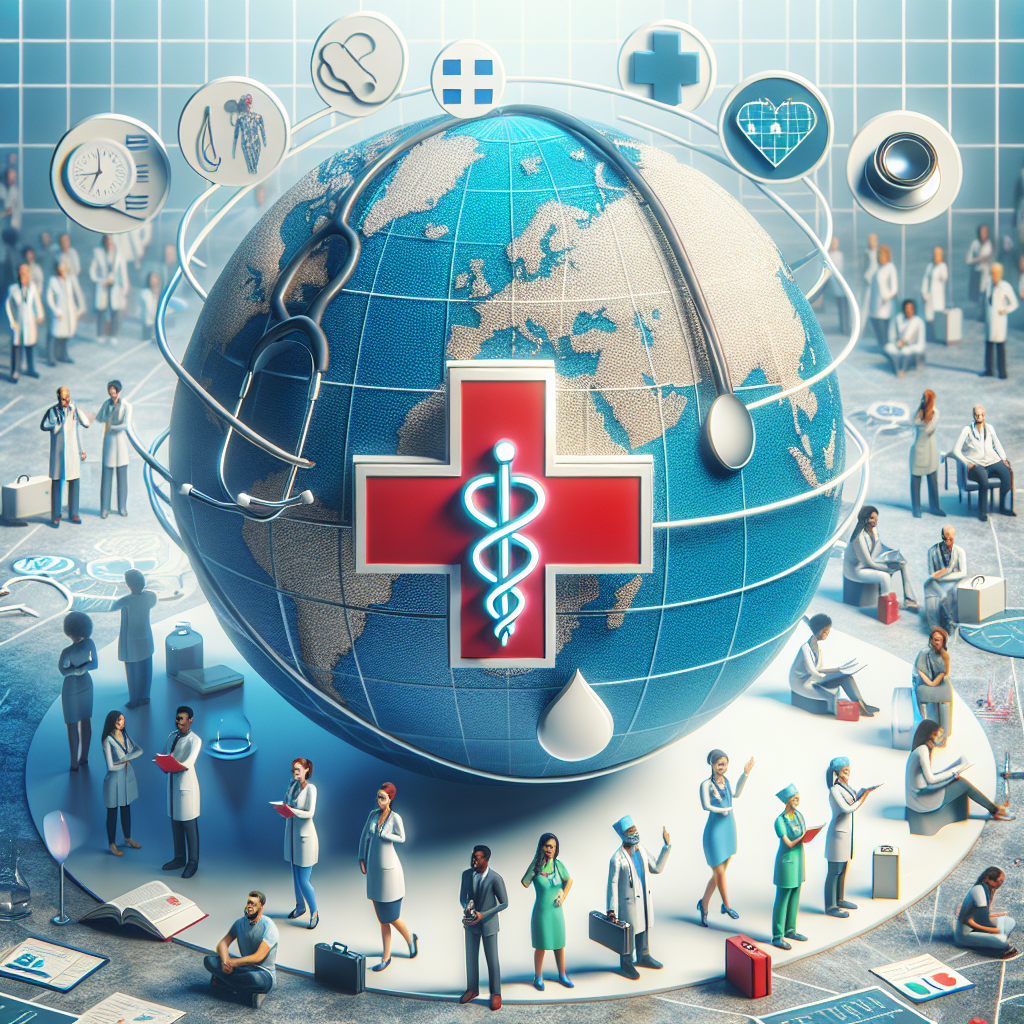WHO Convenes Global Experts to Develop First Guidelines on HTLV-1 Testing and Prevention
The group’s work will focus on developing recommendations for testing, prevention, and surveillance to help countries detect, control, and reduce the spread of HTLV-1.

The World Health Organization (WHO) has announced the formation of a Guideline Development Group (GDG) to craft the first-ever global, evidence-based recommendations on Human T-cell lymphotropic virus type 1 (HTLV-1) — a neglected but serious viral infection that affects millions worldwide.
The GDG will hold its inaugural virtual meeting on 8–9 December 2025, marking a crucial step in the global public health response to this long-overlooked infection. The group’s work will focus on developing recommendations for testing, prevention, and surveillance to help countries detect, control, and reduce the spread of HTLV-1.
A Neglected but Serious Global Health Threat
HTLV-1, the first human retrovirus identified in 1977, infects an estimated 5–10 million people globally. Though less well-known than HIV, it causes serious and often fatal illnesses, including:
-
Adult T-cell leukaemia/lymphoma (ATL) – an aggressive malignancy of the blood and immune system, and
-
HTLV-1-associated myelopathy/tropical spastic paraparesis (HAM/TSP) – a debilitating neurological condition that leads to progressive paralysis.
HTLV-1 is primarily transmitted through sexual contact, blood transfusion, needle sharing, and breastfeeding, making it a sexually transmitted infection (STI) and a blood-borne pathogen.
Despite its severe health impacts, HTLV-1 remains one of the most neglected infectious diseases. Its burden is concentrated in regions such as western and central Africa, Latin America, and the Western Pacific, with significant variation even within these areas. While many high-income countries have implemented screening of blood donations to prevent transmission, few countries have developed comprehensive public health strategies for HTLV-1 prevention, testing, and care.
Closing a Critical Gap in Global Guidance
This new WHO guideline will be the first of its kind to consolidate current scientific evidence and global best practices for HTLV-1 testing and prevention. The document will provide:
-
Clear recommendations on who should be tested,
-
How to test for HTLV-1 accurately and efficiently,
-
Approaches for prevention, including infection control, sexual health education, and maternal-child transmission prevention, and
-
Guidance on resource use and implementation strategies for low- and middle-income countries.
The guideline is being developed in collaboration with the Pan American Health Organization (PAHO) and will contribute to a larger WHO effort to set global priorities and principles for addressing HTLV-1 as a public health concern.
Inclusive and Evidence-Based Development Process
In line with WHO’s standards for guideline development, the Guideline Development Group (GDG) comprises multidisciplinary experts from all WHO regions, selected for their expertise, experience, and understanding of affected communities.
The group includes epidemiologists, clinicians, laboratory scientists, public health practitioners, programme managers, and representatives of affected populations. Members serve in their personal capacities, contributing independent advice rather than representing their institutions or governments. They do not receive financial compensation for their participation.
“This is a milestone for global health equity,” said a WHO technical officer involved in the process. “For too long, HTLV-1 has been neglected, despite causing severe illness and disability. These guidelines will help countries detect infections earlier, prevent transmission, and ensure affected individuals receive appropriate care and support.”
Invitation for Public Comment
To promote transparency and inclusivity, WHO has opened a public consultation period for stakeholders to review the biographies of GDG members and submit feedback. Interested individuals, civil society organizations, research institutions, and advocacy groups can send their comments to hiv-aids@who.int no later than 24 October 2025.
The organization encourages broad participation, noting that input from patients, healthcare providers, researchers, and community advocates is essential to ensure that the guidelines reflect the realities of those most affected.
“We want these recommendations to be globally relevant and grounded in lived experience,” a WHO spokesperson said. “Public engagement ensures that our guidelines are responsive to diverse contexts and needs.”
A Collaborative Step Toward Global Action
The upcoming GDG meeting will mark the beginning of a broader process to strengthen the global response to HTLV-1. The final guidelines, expected in 2026, will serve as a foundation for national public health programmes and inform policies on screening, diagnosis, treatment, and prevention.
The initiative comes amid growing recognition of HTLV-1 as a pressing global health issue. In 2022, WHO identified HTLV-1 as a priority for research and public health action, emphasizing the urgent need to raise awareness, improve surveillance, and expand access to testing.
By establishing clear guidance, WHO and PAHO aim to catalyse national responses, encourage investment in diagnostic and prevention infrastructure, and break decades of silence surrounding HTLV-1.
Toward a Stronger, More Equitable Response
The development of these guidelines reflects WHO’s broader commitment to universal health coverage, disease prevention, and equitable access to healthcare. For millions living in regions where HTLV-1 remains endemic, the initiative represents hope for earlier diagnosis, reduced transmission, and improved health outcomes.
As the world prepares for the GDG’s December meeting, global health experts see this effort as an opportunity to transform how HTLV-1 is addressed — shifting it from neglect to priority action within the international public health agenda.










